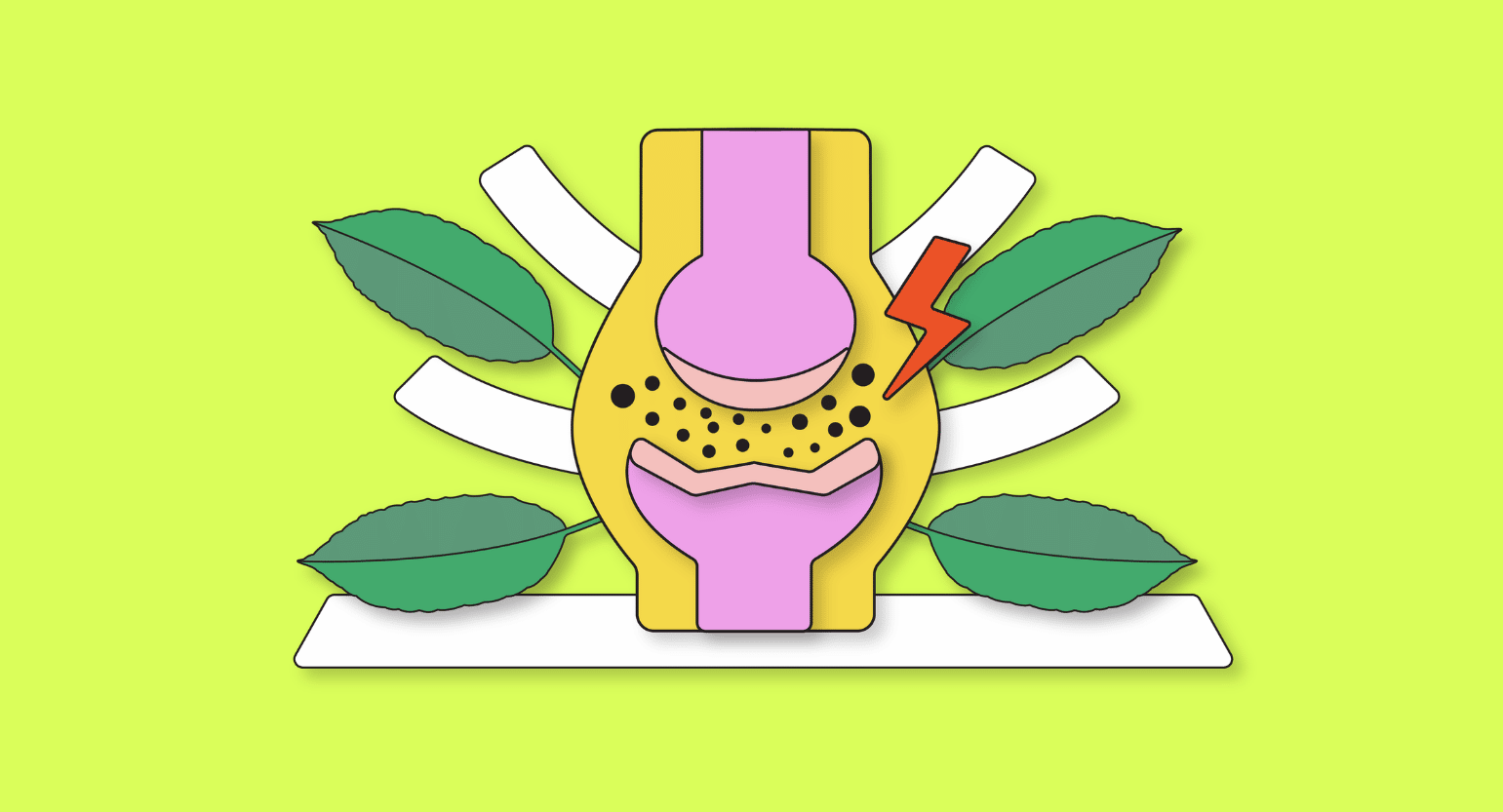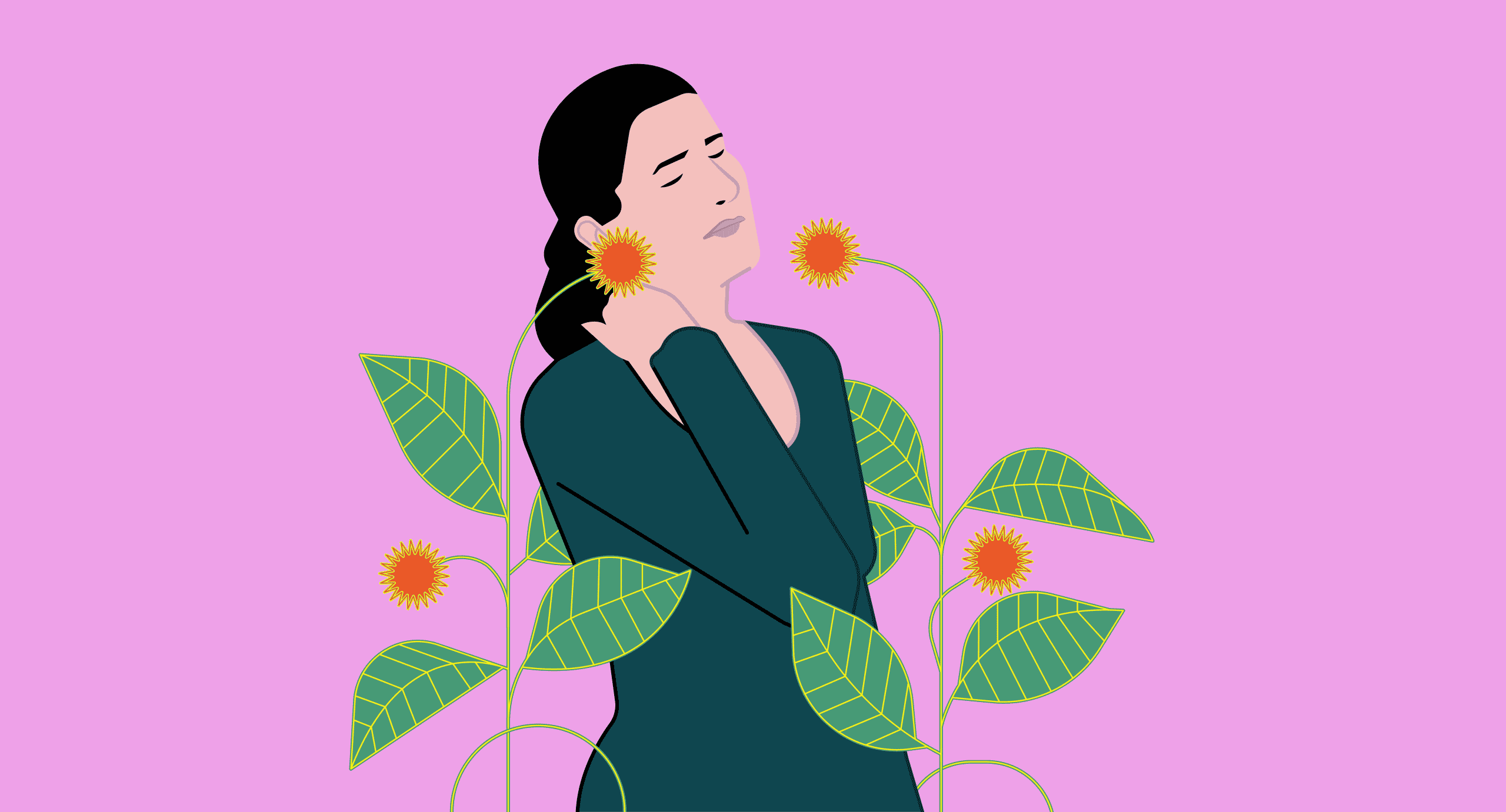What Are the Long-Term Side Effects of Kratom?
Despite the ongoing research on kratom, there are still many unanswered questions. The possible long-term side effects of kratom are not well known, as it is relatively new in the West.
However, studies suggest that the herb is not as dangerous as many other legal substances and is incredibly low-risk when used responsibly (we’ll cover that further down).
Here’s a summary of what we know so far:
- The World Health Organization (WHO) reviewed kratom and declared that it poses little threat to public health.
- A 2023 study found that long-term kratom users in Southern Thailand had no more common health complaints than non-users and were less likely to have a history of chronic health problems. [22]
- A 2020 study found that people with over twenty years of responsible kratom use — and no history of substance misuse — showed no significant alterations in hematological, kidney, liver, thyroid, or inflammatory and gastrointestinal analytes [8].
- The same study suggests that heavy long-term use could cause cardiovascular problems, but more research is needed.
- Studies show long-term use does not seem to alter hormones, including testosterone [9]. In fact, users find improved sexual functioning, such as increased energy and desire and a better ability to maintain an erection [10].
- Kratom is addictive but tends to be far less dangerous and not as severe as opioid addiction [11]. It’s possible to build a tolerance to it if you don’t take regular breaks from it [1].
- Though many people use kratom for their depression and anxiety, too much can also cause, aggravate, or increase the likelihood of these conditions [3].
- It’s rare, but kratom can cause liver damage in some users. People usually recover, but so far, it’s unclear why this happens [6].
- Kratom might cause long-term cognitive deficits in adolescents, though research on humans is needed [23].
Knowing about kratom and how to use it responsibly create safety. Next, we will delve into the long-term side effects of kratom.
1. Addiction
A large number of people use kratom to break free from opioid addiction. However, substances that help treat depression, chronic pain, and other conditions are often addictive in the long run, and kratom is no exception [1].
The big difference is that, unlike opioids, benzodiazepines, and many other prescription medications, it takes overusing kratom for several months to reach this point. Those who use kratom for its many benefits and not recreationally don’t typically face addiction [2].
Below, we will teach you how to detect the different stages of kratom addiction — psychological and physical — so you can stop it in time.
Related: Why Is Kratom So Controversial?
Psychological Dependence: The First Stage
Generally, the onset of addiction is accompanied by psychological symptoms, which may appear in the first weeks of abusing the herb. This is a mental need, not physical; it’s more of a desire for the effects — increased energy or mood, pain relief, etc. — and leads to habitually reaching for it. Kratom is more of a coping mechanism at this point.
If you feel these symptoms at any time, we recommend you reduce your doses slowly so that it doesn’t evolve into physical dependence.
Physical Dependence: The Second Stage
After several months of abusing kratom, you may start to feel a physical dependence, which happens when your body gets used to its presence, causing withdrawal symptoms. This stage is significantly more uncomfortable than the previous one, as you start feeling physically sick when you don’t take kratom.
Withdrawal symptoms often include the following:
- Abdominal pain
- Blurred vision
- Decreased appetite
- Diarrhea
- Fever
- Insomnia
- Muscular pain
- Nausea
- Runny nose
- Sweating
- Vomiting
- Watery eyes
Although it is more difficult to stop taking kratom at this point, the withdrawal is still easier than other substances — and unlikely to cause an overdose [11].

2. Depression
People use kratom to help manage depression. But just like addiction, depression is a common side effect of kratom that can affect anyone at any time [3].
Many factors contribute to depression, but addiction has a complicated relationship with it and is one of the leading causes [4]. Substance use, depression, and addiction can cause a challenging cycle to break, and it is common for people to be trapped for years.
However, treatment options exist for people suffering from depression due to addiction. The proper treatment makes it possible to break free from this cycle and become more balanced.
It’s best to speak to a doctor if you’re dealing with depression, whether you think it’s from kratom or not.

3. Emotional Imbalance
Talking about emotional health usually means handling stressful or emotional situations well. Emotional health is vital for people with, for example, a family or a job to worry about and those who want to stay sane and function well in their daily lives.
Though most of what we know is based on people’s stories, it makes sense for kratom to cause emotional blunting, irritability, etc.
Studies show the opioid system plays a role in our emotions, positive and negative. The endogenous opioid system contributes to emotional processing and helps facilitate feelings like anger, fear, pleasure, and sadness [5].
Because kratom acts on the opioid receptors, making it helpful for mood and pain, it can cause changes in emotional health. These are sometimes subtle, but they can also be quite severe. Irritability and emotional blunting seem to be the most common.
Although not all people who consume kratom experience these problems, be aware that it can happen.

4. Liver Damage
Chronic kratom use has been linked to acute liver damage, though very loosely. This type of injury is rare — and usually reversible — but knowing what to look for is crucial.
Symptoms usually include dark urine, jaundice, and fatigue — and need to be treated by a professional. Patients typically recover after kratom use has been discontinued. It’s unclear how kratom causes the issue, but it’s more likely to occur when other substances are used with kratom [6].
Symptoms such as jaundice can be challenging to distinguish from other medical conditions. Therefore, if you or someone you know suspects liver toxicity after consuming kratom, do not hesitate to see a physician.
5. Kidney Function
One study found that long-term kratom users had elevated protein levels in their urine — called proteinuria — with albumin being the highest [7]. This condition can be an early sign of kidney damage, but it can also mean you need to drink more water. Doctors do a series of tests to determine the cause.

6. Hyperalgesia
Kratom is often used for pain relief; some users claim it can be an effective alternative to opioid analgesics. Some research shows that one of kratom’s main alkaloids, 7-hydroxymitragynine, is more potent than morphine [13]. Of course, kratom has a low percentage of this substance, so kratom as a whole is not this strong, but this explains how it can work so well for pain.
However, chronic use may result in hyperalgesia — an increased sensitivity to pain [12].
This condition can manifest as seemingly random pain but may also be sensitive to an injury. Although kratom has the potential to be effective in controlling pain, it is crucial to speak with a physician before using it, especially if you are taking opioids for pain relief.
7. Hormones & Low Libido
Although there is not much research on kratom use and sexual function, most suggest that kratom does not significantly affect hormone levels [9]. Many people claim that consuming kratom improves their sex life by increasing their desire and sensitivity, helping them maintain an erection, and prolonging climax [10].
However, limited evidence suggests that the herb may negatively affect sex drive by messing with hormones and energy levels [14]. Taking high doses of kratom for long periods can lead to increased levels of the hormone prolactin. Too much causes men and women to produce breast milk can cause menstrual and fertility issues in women and low libido and erectile dysfunction in men.
While kratom may have some beneficial effects on sexual function, it is crucial to be aware of the potential risks and talk to your doctor if you already struggle. It might come down to trial and error — pay attention to how it affects you and alter your use accordingly.

8. Seizures
A 2021 review found that information from Poison Centers suggests that kratom can cause seizures, usually in those being treated for epilepsy [20]. However, there is little clinical evidence to back this up.
Other recent case studies suggest that kratom use can cause recurring seizures in susceptible individuals, primarily when used with other drugs [21].
Can Kratom Cause Death?
One of the biggest myths surrounding kratom is that it has caused many deaths. Because it is similar to opioids, people assume it’s also as dangerous.
In reality, fatal cases involving kratom usually involve other substances — fentanyl, prescription opioids or benzodiazepines, heroin, and cocaine are common [15, 16]. Kratom alone is rarely the cause of death — one study goes so far as to say the risk of overdose is 1000 times greater with opioids than with kratom [17].
Aside from multi-substance use, adulterated kratom is one of the most significant risks.
Kratom is unregulated in many places, leaving the door open for sellers to add a substance to make their product seem more potent. This also means kratom can be contaminated in other ways — heavy metals and salmonella are often found in kratom samples [18].

Several deaths have been reported after users purchased adulterated kratom products containing high levels of O-desmethyltramadol — the primary active metabolite of tramadol [19].
For this reason, it is crucial to only buy from trustworthy vendors that provide third-party lab results for their products and are backed by the American Kratom Association (AKA).
Because of kratom-drug interactions, avoid mixing it with other substances — even herbal supplements and over-the-counter medications — until you verify with your doctor that it’s safe.
Related: Exhaustive List of Kratom-Drug Interactions

How To Avoid Kratom’s Side Effects
As we previously mentioned, using it responsibly is the best way to avoid kratom’s side effects. Doing this also helps limit short-term side effects like nausea, headaches, vomiting, dehydration, and anxiety.
So, what does “responsible use” look like?
1. Use the Smallest Amount Possible
If you haven’t used kratom before, start with the smallest dose possible and work your way up. This way, you aren’t using 4 g if 2 g would do the trick.
If you’re already deep into kratom use, avoid upping the dose to feel the effects better. If you find your usual amount isn’t cutting it, take a break (see point #3 for details).
Doing this keeps you from using too much or building a tolerance — two things that lead to addiction and increases your risk of other side effects.
2. Take Kratom Only When Necessary
It’s easy for kratom to become habitual. It’s mid-afternoon, and you’re dragging, so you instinctively toss-and-wash a few grams of kratom to keep you going. It’s a short path to addiction once you become overly accustomed to kratom’s effects. Make sure you have other tools to help you.
If kratom is genuinely a necessity — to relieve chronic pain, for example — take greater care in limiting your dose and finding alternatives so you can take a break once in a while.
Related: List of the Top 23 Natural Alternatives for Chronic Pain
3. Take Tolerance Breaks
We talk a lot about “taking a break” from kratom.
Over time, your body gets used to kratom, and it takes a larger amount to get the same effects. Instead of 3 g being enough, you find yourself needing 4 g.
The consensus is to take a tolerance break — only use kratom four or five days a week and stop using it for a whole week every month. This is the best way to avoid addiction and other issues.
Sometimes, people realize they need to stop using kratom permanently. If you feel you’ve reached this point, know that help is available. Our guide on quitting kratom can give you tips on the process.
Related: Top 15 Herbs for Boosting Energy & Productivity

What’s the Ideal Kratom Dosage?
Unfortunately, this question is more difficult to answer than it seems since it depends on multiple factors such as weight, tolerance, and strain. However, we made a brief guide with everything you need to consider.
The first thing to consider to find your dosage is your objectives with kratom: below, we will show you the recommended amounts for each condition.

Dosage for Pain
Kratom is very effective in controlling pain at higher doses, even for more severe cases, such as cancer-related pain or neuropathy.
Although more research is needed to understand the therapeutic potential of kratom fully, it is clear that it has the potential to offer people effective pain relief without the risks associated with prescription painkillers.
Doses for pain:
- Mild pain: 2–4 grams
- Moderate pain: 3–5 grams
- Severe pain: 5 grams or more

Dosage for Anxiety
Kratom has been used in Asia for centuries as a remedy for stress, pain, and other ailments. Because it’s relaxing and can create euphoria, many people use kratom for anxiety.
Higher doses usually work best to control anxiety, as lower doses can be overly stimulating, producing opposite effects. However, taking too much can also increase the risk of side effects and cause sedation, so it is crucial to start small.
The most common dose for anxiety is 3-4 grams.

Dosage for Energy & Focus
Kratom is an excellent way to boost energy and concentration, making it the perfect choice for students or anyone looking to improve productivity.
The ideal dose for concentration and stamina is 2-4 grams. Some people even microdose 1 gram to improve concentration, creativity, mental energy, and alertness.
Kratom is not for everyone, but it’s worth a try if you’re looking for a natural way to boost your energy levels and improve your overall well-being.

Dosage for Depression
Depression is a common and severe illness accompanied by low mood, lack of energy, and difficulty concentrating. It can sometimes become so intense that it causes significant distress and interferes with normal day-to-day functioning.
Kratom can help improve mood and reduce symptoms of depression in low doses due to its interaction with dopamine receptors. However, some strains have stimulant properties that can further help in larger amounts.
Some people find that the stimulant effects improve mood and depression, while others prefer relaxing or sedative qualities. You might need to experiment to see what works best for your situation.
Doses for depression:
- Mild depression: 1–2 grams
- Moderate depression: 2–4 grams
- Severe depression: 4 or more grams

Dosage for Opiate Withdrawal
Many people use kratom to manage opioid withdrawal symptoms. Its effects are significant for reducing the pain, stress, irritability, and general discomfort that comes with withdrawal. However, if the symptoms become too severe, see a doctor.
Start with a low dose (3 grams), but fighting withdrawal usually requires a higher amount, similar to what’s needed for severe pain.
Because you’re using one addictive substance to break an addiction to another one, make sure you take great care in slowly tapering off.
Which Kratom Strain Should I Use?
Knowing your kratom strains is another crucial factor in avoiding side effects, as each has different properties. In this section, we will introduce a wide range of kratom varieties so that you can find the one that best suits your needs.

Green Vein Kratom Powder
Green vein kratom powder can be a stimulant and a sedative depending on the dosage, although milder than the whites and reds. For this reason, it is an excellent choice for beginners, people with low tolerance, or anyone looking for a more balanced experience.
The top-rated green-veined kratom strains:
- Green Malay: This is a complete strain, as it is excellent for a blend of stimulation and relaxation.
- Green Borneo: This strain stands out mainly for its stimulating effects, so it is excellent to take in the morning.
- Green Bali: This stimulant strain can relieve muscle aches and pains without causing much drowsiness.

Red Vein Kratom Powder
Red vein kratom powder can be a powerful tool for fighting pain or insomnia. However, we recommend you avoid taking large amounts of most reds during the day, as they can lead to excessive drowsiness and difficulty concentrating.
The top-rated red-veined kratom strains:
- Red Thai: Most enthusiasts recommend this strain for anxiety, chronic pain, and insomnia.
- Red Horn: Unlike most red varieties, this strain can relieve chronic pain during the day.
- Red Bali: This is one of the most potent red strains, so we recommend taking it at night.

White Vein Kratom Powder
White vein kratom powder is gaining popularity for its ability to increase energy and concentration. However, keep in mind the dosage and the time of day you take it: too much can cause insomnia and anxiety.
The top-rated white-veined kratom strains are:
- White Bali: Besides promoting energy, this strain can help relieve muscle aches and pain, so it is excellent for use as a pain reliever during the day.
- White Borneo: This is one of the favorite strains of students, as it mainly promotes concentration and energy.
- White Thai: This is one of the most potent white strains, making it an excellent substitute for morning coffee.

Conclusion: What Are the Long-Term Side Effects of Kratom?
While there is no doubt that kratom has several benefits and is generally very safe, it is vital to be aware of possible side effects before taking it.
The best way to avoid short- and long-term side effects is to respect the dosages, take kratom breaks, not mix it with other substances, and buy from reputable vendors.
If you are still determining your dosage, we recommend starting small until you find the right amount.
- Stanciu, C. N., Gnanasegaram, S. A., Ahmed, S., & Penders, T. (2019). Kratom withdrawal: a systematic review with case series. Journal of psychoactive drugs, 51(1), 12-18.
- Eastlack, S. C., Cornett, E. M., & Kaye, A. D. (2020). Kratom—Pharmacology, clinical implications, and outlook: a comprehensive review. Pain and therapy, 9(1), 55-69.
- Bowe, A., & Kerr, P. L. (2020). A complex case of kratom dependence, depression, and chronic pain in opioid use disorder: effects of buprenorphine in clinical management. Journal of Psychoactive Drugs, 52(5), 447-452.
- Sullivan, M. D. (2018). Depression effects on long-term prescription opioid use, abuse, and addiction. The Clinical journal of pain, 34(9), 878-884.
- Nummenmaa, L., & Tuominen, L. (2018). Opioid system and human emotions. British journal of pharmacology, 175(14), 2737-2749.
- National Institutes of Health. (2017). LiverTox: clinical and research information on drug-induced liver injury.
- Jasim, R. K., Hassan, Z., Singh, D., Boyer, E., & Gam, L. H. (2022). Characterization of urinary protein profile in regular kratom (Mitragyna speciosa korth.) users in Malaysia. Journal of Addictive Diseases, 40(2), 235-246.
- Singh, D., Narayanan, S., Grundmann, O., Chear, N. J. Y., Murugaiyah, V., Hamid, S. B. S., … & Balasingam, V. (2020). Long-term Effects of Kratom [mitragyna Speciosa] Use. Mal J. Med. Health Sci, 16(4), 64-72.
- Singh, D., Murugaiyah, V., Hamid, S. B. S., Kasinather, V., Chan, M. S. A., Ho, E. T. W., … & Mansor, S. M. (2018). Assessment of gonadotropins and testosterone hormone levels in regular Mitragyna speciosa (Korth.) users. Journal of Ethnopharmacology, 221, 30-36.
- Singh, D., Grundmann, O., Murugaiyah, V., Rahim, A. B. M., Chawarski, M., & Balasingam, V. (2020). Improved sexual functioning of long-term daily users of Mitragyna speciosa (Korth.). Journal of Herbal Medicine, 19, 100293.
- Warner, M. L., Kaufman, N. C., & Grundmann, O. (2016). The pharmacology and toxicology of kratom: from traditional herb to drug of abuse. International journal of legal medicine, 130(1), 127-138.
- Wilson, L. L., Chakraborty, S., Eans, S. O., Cirino, T. J., Stacy, H. M., Simons, C. A., … & McLaughlin, J. P. (2021). Kratom alkaloids, natural and semi-synthetic, show less physical dependence and ameliorate opioid withdrawal. Cellular and molecular neurobiology, 41(5), 1131-1143.
- Matsumoto, K., Hatori, Y., Murayama, T., Tashima, K., Wongseripipatana, S., Misawa, K., … & Horie, S. (2006). Involvement of μ-opioid receptors in antinociception and inhibition of gastrointestinal transit induced by 7-hydroxymitragynine, isolated from Thai herbal medicine Mitragyna speciosa. European journal of pharmacology, 549(1-3), 63-70.
- Alsarraf, E., Myers, J., Culbreth, S., & Fanikos, J. (2019). Kratom from head to toe—case reviews of adverse events and toxicities. Current Emergency and Hospital Medicine Reports, 7(4), 141-168.
- Corkery, J. M., Streete, P., Claridge, H., Goodair, C., Papanti, D., Orsolini, L., … & Hendricks, A. (2019). Characteristics of deaths associated with kratom use. Journal of psychopharmacology, 33(9), 1102-1123.
- Olsen, E. O. M., O’Donnell, J., Mattson, C. L., Schier, J. G., & Wilson, N. (2019). Notes from the field: unintentional drug overdose deaths with kratom detected—27 states, July 2016–December 2017. Morbidity and Mortality Weekly Report, 68(14), 326.
- Henningfield, J. E., Grundmann, O., Babin, J. K., Fant, R. V., Wang, D. W., & Cone, E. J. (2019). Risk of death associated with kratom use compared to opioids. Preventive medicine, 128, 105851.
- Kuehn, B. (2019). Kratom-related deaths. Jama, 321(20), 1966-1966.
- Kronstrand, R., Roman, M., Thelander, G., & Eriksson, A. (2011). Unintentional fatal intoxications with mitragynine and O-desmethyltramadol from the herbal blend Krypton. Journal of analytical toxicology, 35(4), 242-247.
- Burke, D. J., Mahonski, S. G., & Van Cott, A. C. (2021). Breakthrough seizure associated with kratom use in patients with epilepsy. Neurology: Clinical Practice, 11(1), 78-84.
- Halim, S. A., Low, J. H., Chee, Y. C., & Alias, M. R. (2021). Seizures among young adults consuming kratom beverages in Malaysia: A case series. Epilepsy & Behavior, 121, 108057.
- Suhaimi, F. W., Aznal, A. N. Z., Hazalin, N. A. M. N., Teh, L. K., Hassan, Z., & Salleh, M. Z. (2023). Kratom (M. speciosa) exposure during adolescence caused long-lasting cognitive behavioural deficits associated with perturbated brain metabolism pathways in adult rats. Behavioural Brain Research, 446, 114411.
- Suhaimi, F. W., Aznal, A. N. Z., Hazalin, N. A. M. N., Teh, L. K., Hassan, Z., & Salleh, M. Z. (2023). Kratom (M. speciosa) exposure during adolescence caused long-lasting cognitive behavioural deficits associated with perturbated brain metabolism pathways in adult rats. Behavioural Brain Research, 446, 114411.









